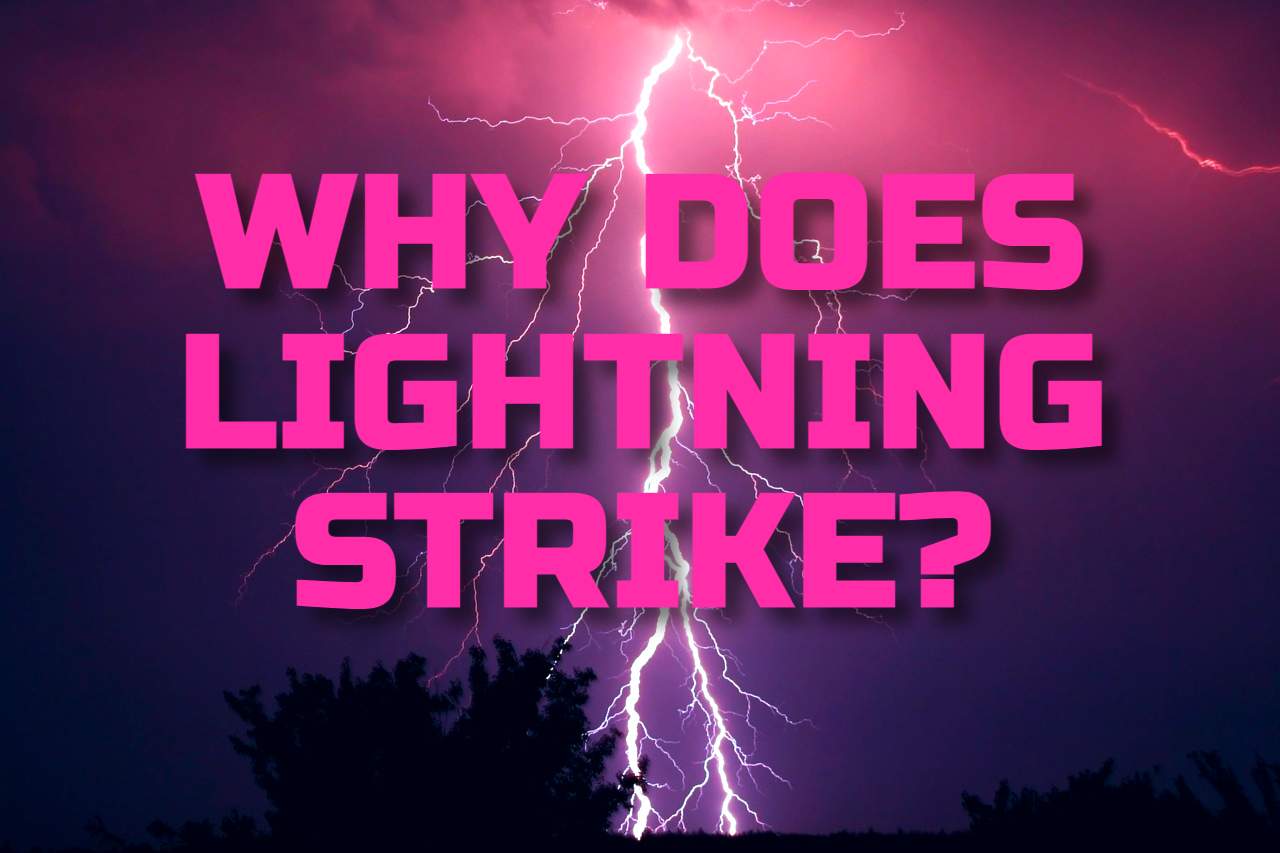Table of Contents
Intro
Lightning is one of nature’s most awe-inspiring and spectacular occurrences, but what causes it? In this article, we explore the science behind why lightning strikes. We will look at the key components necessary for lightning to form, as well as some of the theories that may explain why it occurs. Additionally, we will delve into how lightning can be dangerous and how people can stay safe in a thunderstorm.
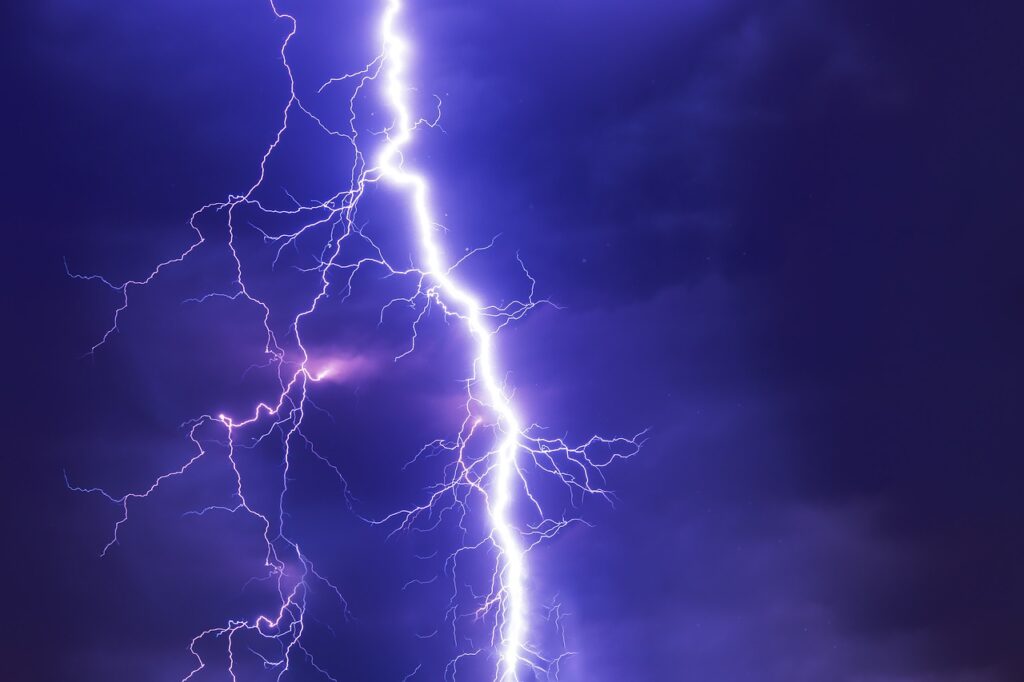
Lightning Basics
Lightning is an electrical discharge that occurs within a thunderstorm cloud, between the cloud and the ground, or between two different clouds. When there are positive and negative charges in a cloud, they start to separate due to air currents. The top of the cloud becomes positively charged while the bottom becomes negatively charged. This separation creates an electric field that causes lightning.
When the electric field becomes strong enough, it can ionize the air molecules through which it passes. These ionized atoms then create a path for electrons to flow through or “light up.” This is what we see as lightning.
Lightning usually strikes tall objects such as trees, buildings or towers because they offer a path of least resistance for electricity to follow. However, humans do not attract lightning directly; instead, metal objects on our bodies (like jewelry) can increase our chances of being struck if we happen to be in the wrong place at the wrong time.
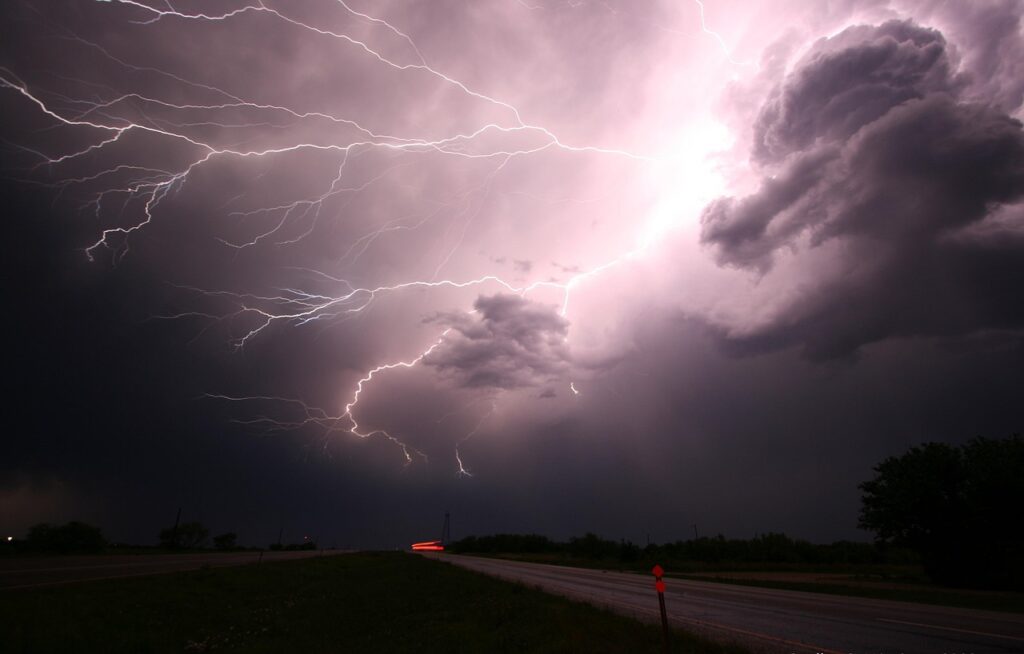
Types of Lightning
Lightning is a powerful natural phenomenon that occurs when there is an electrical discharge in the atmosphere. There are several types of lightning, each caused by different factors. One type is cloud-to-ground lightning, which occurs when there is a buildup of negative charge in the clouds and positive charge on the ground. When these charges become strong enough, they create an electric current that results in lightning.
Another type of lightning is intra-cloud lightning, which occurs within a single cloud. This happens when there are different areas of charge within the cloud, causing electricity to flow between them and resulting in flashes of light. Additionally, there is also inter-cloud lightning or sheet lightning, which takes place between two separate clouds.
Lightning strikes occur most frequently during thunderstorms because of the intense atmospheric conditions that create electricity. Thunderstorms form when warm air rises quickly into cooler air above it, creating turbulent conditions that can generate static charges and lead to electrical discharges between the clouds or from the clouds to the ground. Understanding these different types of lightning can help us better prepare for thunderstorms and stay safe during extreme weather conditions.
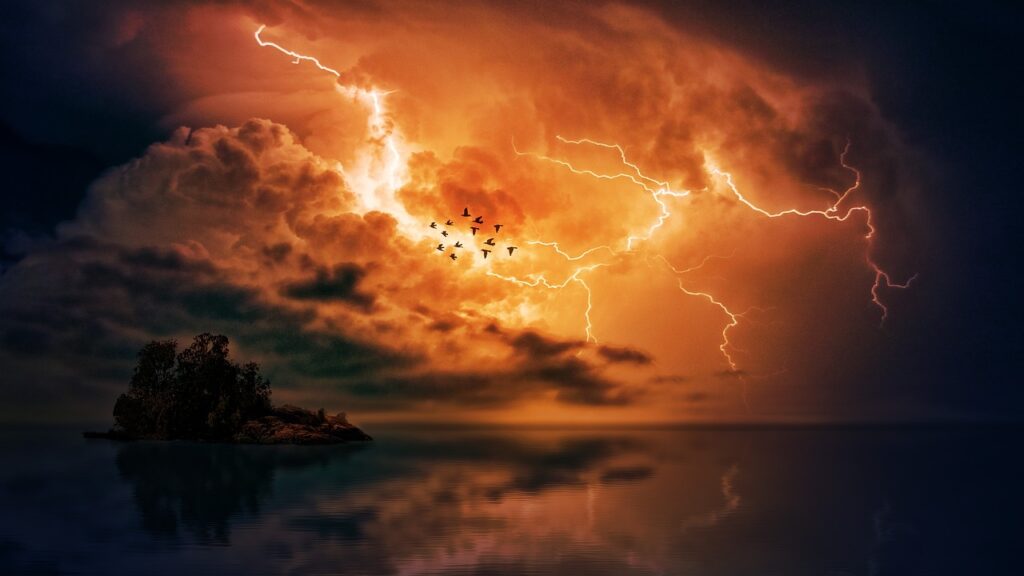
What Causes Lightning
Lightning is one of the most fascinating yet dangerous natural phenomena in the world. It occurs when there is a buildup of electrical charges between two clouds or between a cloud and the ground. These charges are generated due to differences in temperature, pressure, and humidity within the atmosphere.
One major cause of lightning is thunderstorms. During thunderstorms, moisture-filled air rises from the earth's surface and collides with colder air at higher altitudes, creating an unstable environment that can lead to lightning strikes. Additionally, volcanic eruptions are also known to cause lightning. When ash particles from volcanic eruptions collide together they create static electricity that ionizes the air and leads to lightning.
Finally, man-made causes such as forest fires can also generate lightning strikes. Smoke particles produced by these fires can create an environment that favors cloud formation leading to thunderstorms which then can trigger lightning strikes. Despite our advanced technology and knowledge about weather patterns, scientists still have much more research to conduct before fully understanding all of the causes behind this awe-inspiring phenomenon.
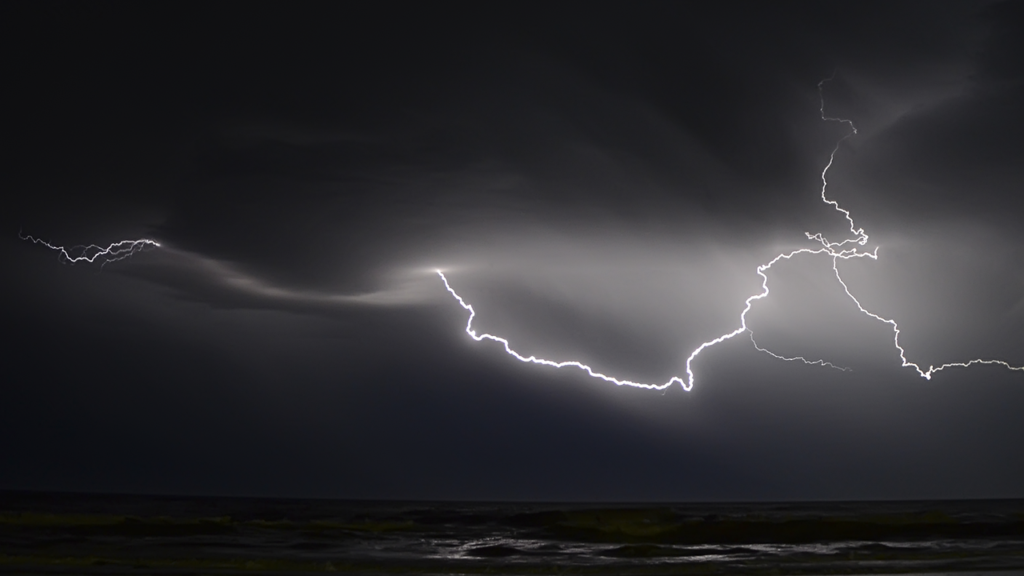
What Causes Thunder
Thunder is the loud rumbling sound that we hear after seeing a flash of lightning. Thunder is actually the sound produced by the shock wave created as lightning super heats the air around it. When there is a thunderstorm, the clouds become electrically charged, with the lower parts of the clouds becoming negatively charged while the upper parts become positively charged.
This difference in charge causes a buildup of electrical energy. When the voltage becomes high enough, it will create an electrical discharge in the form of a lightning bolt. The intense heat of the lightning heats up the surrounding air, creating a sonic shock wave that travels through the atmosphere as thunder.
Thunder can be heard up to 15 miles away from the point where the lightning strikes. Hail can also contribute to the intensity of thunder. Thunder is a natural phenomenon that occurs when there is a buildup of electrical charges in the atmosphere. It is responsible for the awe-inspiring power and beauty displayed during a thunderstorm. Though rare, lightning can also strike human beings. However, knowing basic lightning safety can prevent you from getting struck.
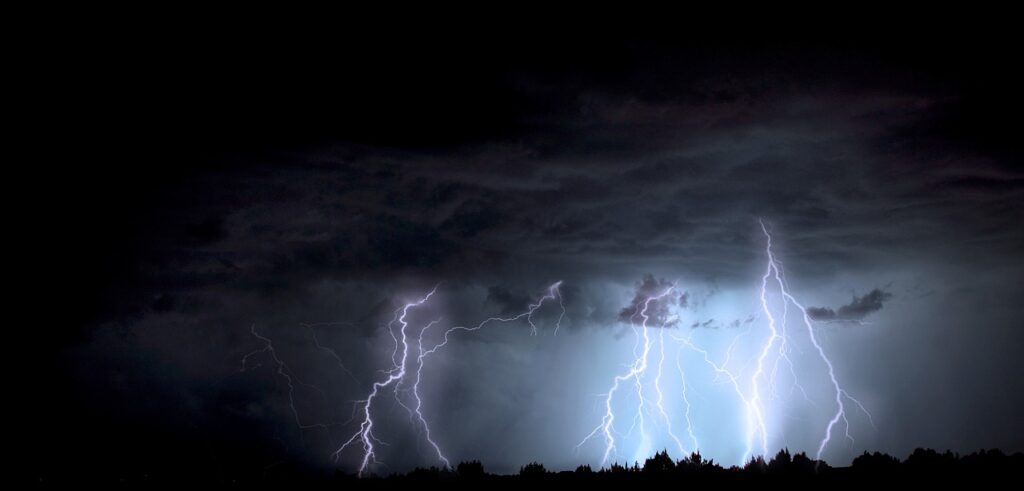
Lightning's Effects
Lightning is a powerful and awe-inspiring natural phenomenon that has fascinated humans for centuries. The effects of lightning can be both destructive and beneficial, depending on the circumstances. When lightning strikes an object, it can cause damage to structures, electrical systems, and even living beings. At the same time, lightning also plays an important role in maintaining the balance of nature by providing nutrients to plants through nitrogen fixation.
One of the most common effects of lightning is its potential danger to human life. Lightning strikes can cause severe burns or even death if a person is caught in its path. In addition to direct injury, lightning can also cause fires which can quickly spread across large areas of land. Another dangerous effect of lightning is its impact on electrical systems such as power grids and communication networks.
Despite these dangers, there are also benefits associated with lightning strikes. For example, when lightning hits soil or water it creates ozone which helps purify the air we breathe. Additionally, as mentioned earlier, nitrogen fixation occurs during a thunderstorm when atmospheric nitrogen combines with oxygen creating nitrates that are essential for plant growth.
In conclusion, while the effects of lighting can be both destructive and beneficial they are an integral part of our environment that we must learn to live with safely and responsibly.
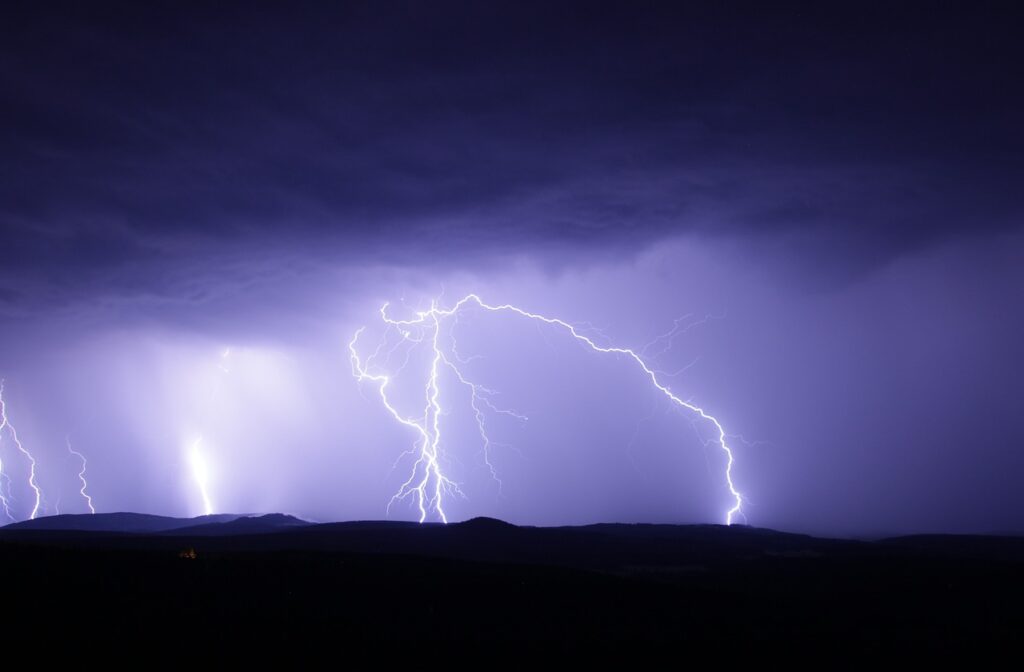
Protection from Lightning Strike
Lightning is a natural phenomenon that occurs when there is an imbalance of electric charges in the atmosphere. Thunderstorms are usually responsible for lightning strikes, as they create intense electrical fields within the clouds. This results in lightning bolts that can travel at speeds of up to 60,000 miles per second and release energy equivalent to millions of volts.
While lightning can be awe-inspiring and beautiful to watch from afar, it poses a serious threat to people and property when it strikes too close. In addition to causing power outages, fires, and structural damage, lightning strikes can also result in severe injuries and fatalities. Therefore, it is essential to take precautions against lightning strikes.
There are several ways you can protect yourself from being struck by lightning. One way is by staying indoors during thunderstorms or seeking shelter in a car with windows closed. You should also avoid using electronics or appliances connected to the electrical outlet during storms or taking baths/showers until after the storm has passed.
Additionally, if you find yourself caught outside during a storm without any safe shelter nearby, you should try crouching down on your toes while keeping your feet together as this minimizes contact with the ground surface which reduces your chances of receiving an electric shock through your feet if struck by lighting.
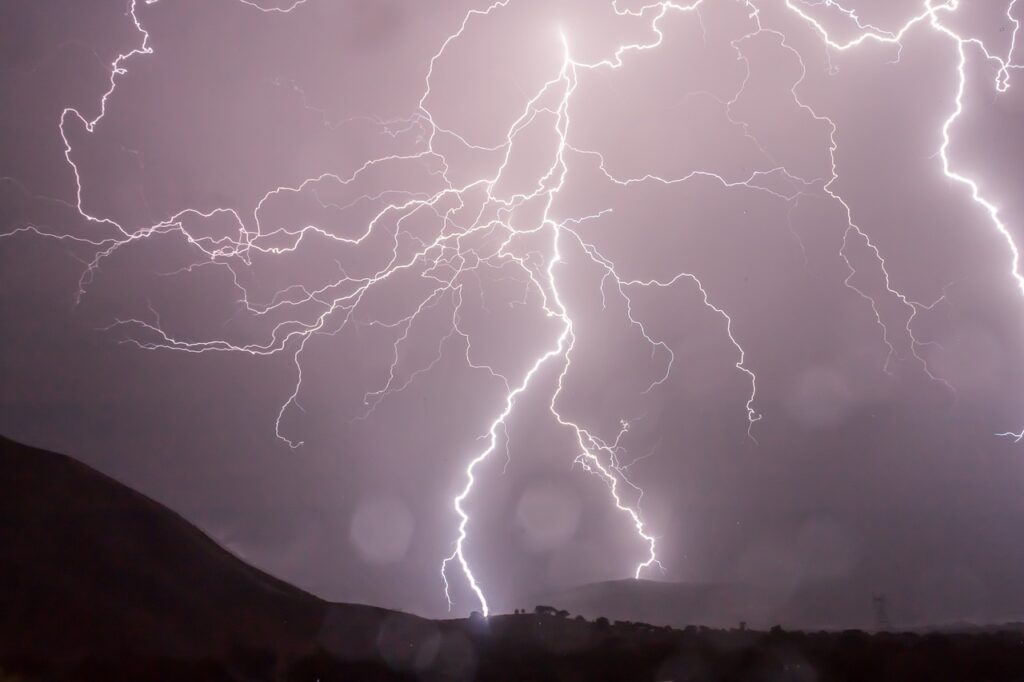
Conclusion: Understanding the Risk
In conclusion, understanding the risk of lightning strikes is crucial in keeping oneself safe during a thunderstorm. Lightning occurs due to the buildup of electrical charges in the clouds, which are then discharged through a path of least resistance, often striking objects on the ground. With lightning being hotter than the surface of the sun and capable of reaching up to 30,000 amps of current, it poses a significant risk to human life.
It's important to note that while anyone can be struck by lightning, certain factors increase one's chances. These include being outdoors during a storm or being near tall objects such as trees or metal structures. Additionally, activities such as using electronic devices or taking shelter under isolated trees also increase one's vulnerability.
Understanding these risks and taking necessary precautions such as staying indoors during storms or seeking shelter in fully enclosed vehicles can greatly reduce one's chances of getting struck by lightning.
In summary, although lightning strikes may seem random and unpredictable at times, understanding their risks is key to staying safe during thunderstorms. By avoiding high-risk situations and following safety guidelines when necessary, we can minimize our exposure to this dangerous natural phenomenon.

Related Articles
Earth Science Why does lightning strike from the ground up?
https://earthscience.stackexchange.com/questions/580/why-does-lightning-strike-from-the-ground-up
Quora Why does lightning strike humans?
https://www.quora.com/Why-does-lightning-strike-humans
Lightening Strikes Ltd Why does lightning strike around the world?
https://www.lightningstrikeltd.co.uk/blog/lightning-strikes-around-the-world/
New Scientist Why does lightning strike?
Economic Times Why does lightning strike tap into new research
SC Jinks Why does lightning strike?
https://scijinks.gov/lightning/
Wikipedia Why does lightning strike?
https://en.wikipedia.org/wiki/Lightning_strike
Weather Why does lightning strike?
https://www.weather.gov/safety/lightning-struck
Weather Why does lightning strike science overview
https://www.weather.gov/safety/lightning-science-overview
Scied UCAR Why does lightning strike thunder and lightning
https://scied.ucar.edu/learning-zone/storms/thunder-and-lightning
The Conversation Why does lightning strike zig zag at last we have the answer to the mystery
Live Science Why does lightning strike?
https://www.livescience.com/why-lightning-zigzags
Nerd Momma Why is the ocean salty?
https://nerdmomma.com/why-is-the-ocean-salty-9-amazing-sea-salty-salt-facts/#more-2028
Nerd Momma Why are flamingos pink? What makes flamingos pink and what makes a flamingo turn pink?
https://nerdmomma.com/why-are-flamingos-pink-3-astounding-main-reasons/#more-1799
